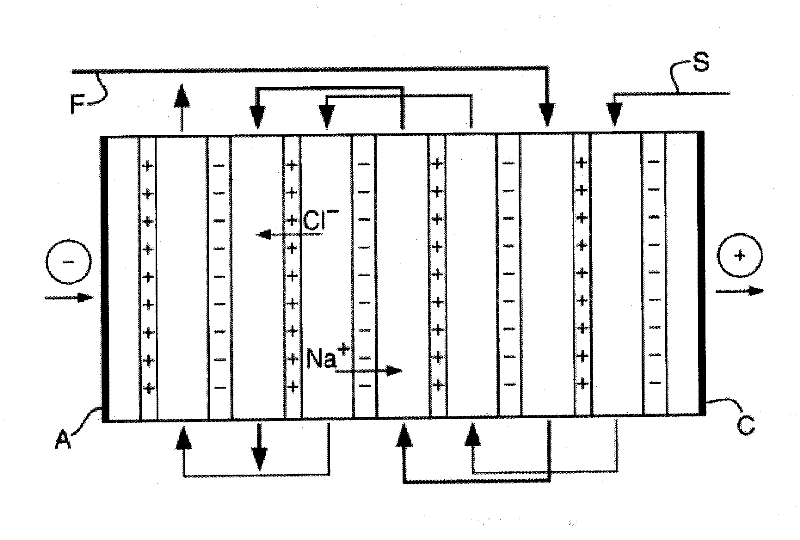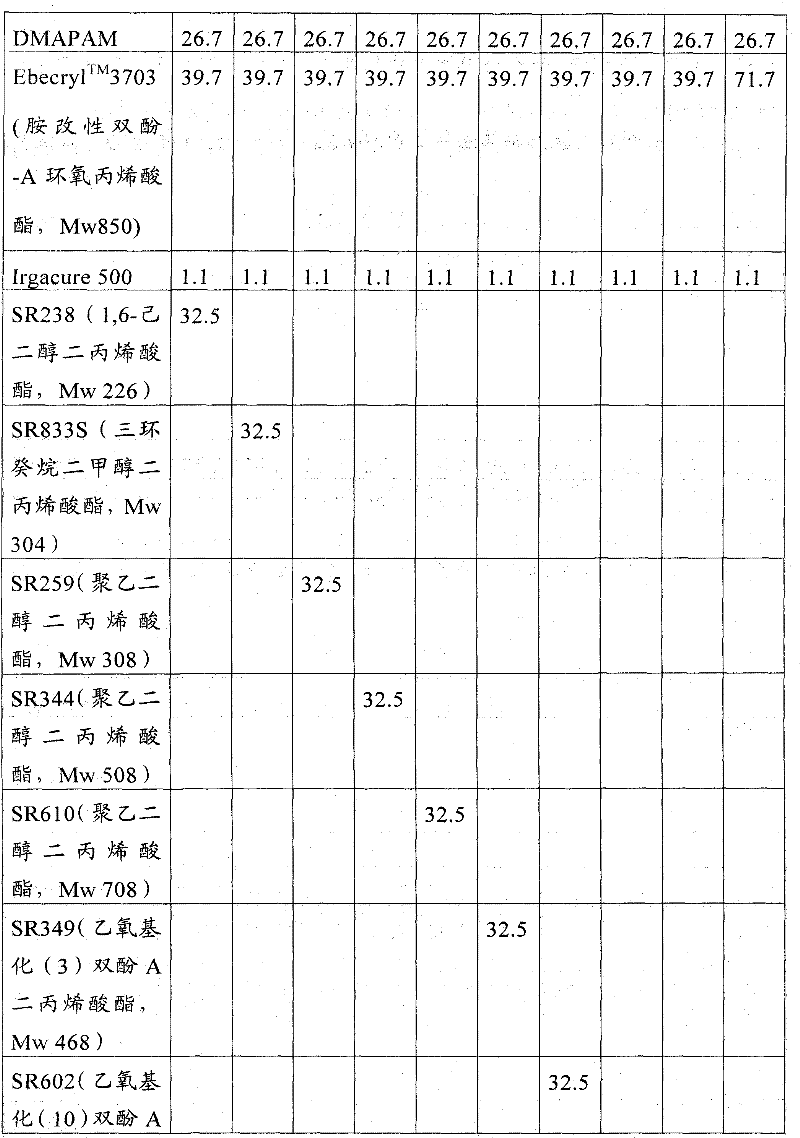Process for preparing membranes
A group and composition technology, applied in the field of film making, can solve the problems of slow curing and energy consumption
- Summary
- Abstract
- Description
- Claims
- Application Information
AI Technical Summary
Problems solved by technology
Method used
Image
Examples
example 1
[0159] A curable composition ("CC1") was prepared by mixing the ingredients shown in Table 1:
[0160] Table 1
[0161] Element
Content (wt%)
[0162] Ebecryl TM 3703
74.2
DMAPAM
24.8
Irgacure TM 500
1.0
[0163] Step (i) - Applying curable compound to the support
[0164] The curable compound CC1 was applied to a thickness of 150 microns on a support (paper extrusion coated with polyethylene layer).
[0165] In this example, reinforcement material (woven SEFAR) was coated on layer CC1 and flattened using a 150 micron rod / blade coater.
[0166] Step (ii) - Curing
[0167] Films were prepared by curing the product of step (i) at a speed of 15 m / min (single pass) using a LightHammer LH6 from Fusion UV Systems equipped with a D lamp operating at 100% intensity. The curing time was 0.8 seconds.
[0168] The resulting membrane was removed from the support and kept in 0.5M NaCl solution (buffered to pH ...
example 9
[0183] The film produced in Example 9 disintegrated upon drying. The decomposition on drying of the membrane produced in Example 9 and the low permselectivity of the membrane produced in Example 10 indicated that the compositions containing methacrylate could not cure as fast as the other examples without methacrylate.
[0184] Examples 12 to 14
[0185] Other curable compositions CC12 to CC14 were prepared according to the formulations shown in Table 4:
[0186] Table 4
[0187] Element
CC12wt%
CC13wt%
CC14wt%
DMAPAM
33.1
33.1
49.4
Ebecryl TM 3703
49.2
49.2
49.2
Irgacure TM 500
1.4
1.4
1.4
SR238
16.3
SR349
16.3
[0188] Films were prepared from curable compositions CC12 to CC14 using the method described in Example 1 above, except Novatexx 2473 was used in place of the woven Sefar and excess curable composition was removed using a 4 m...
PUM
 Login to View More
Login to View More Abstract
Description
Claims
Application Information
 Login to View More
Login to View More - R&D
- Intellectual Property
- Life Sciences
- Materials
- Tech Scout
- Unparalleled Data Quality
- Higher Quality Content
- 60% Fewer Hallucinations
Browse by: Latest US Patents, China's latest patents, Technical Efficacy Thesaurus, Application Domain, Technology Topic, Popular Technical Reports.
© 2025 PatSnap. All rights reserved.Legal|Privacy policy|Modern Slavery Act Transparency Statement|Sitemap|About US| Contact US: help@patsnap.com



